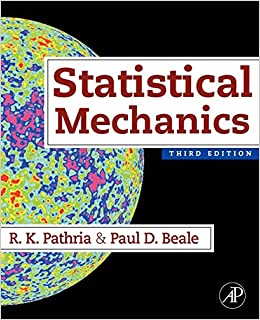We consider a volume element (d x_{1} d y_{1} d z_{1}) around the point (Pleft(x_{1}, 0,0
Question:
We consider a volume element \(d x_{1} d y_{1} d z_{1}\) around the point \(P\left(x_{1}, 0,0 \right)\) in solid 1 and a volume element \(d x_{2} d y_{2} d z_{2}\) around the point \(Q\left(x_{2}, y_{2}, z_{2} \right)\) in solid 2. The force of attraction between these elements will be
\[
-\alpha\left(n d x_{1} d y_{1} d z_{1} \right)\left(n d x_{2} d y_{2} d z_{2} \right) \frac{\ell^{5}}{\left\{\left(x_{2}-x_{1} \right)^{2}+y_{2}^{2}+z_{2}^{2} \right\}^{5 / 2}}
\]
directed along the line joining the points \(P\) and \(Q\). The normal component of this force will be
\[
-\alpha n^{2}\left(d y_{1} d z_{1} \right)^{\ell^{5}} \frac{\left(x_{2}-x_{1} \right)}{\left\{\left(x_{2}-x_{1} \right)^{2}+y_{2}^{2}+z_{2}^{2} \right\}^{3}} d x_{1} d x_{2} d y_{2} d z_{2}
\]
The net force (per unit area) experienced by solid 1, because of attraction by all the molecules of solid 2 , will thus be
\[
\begin{aligned}
& -\alpha n^{2} \ell^{5} \int_{x_{1}=-\infty}^{0} \int_{x_{2}=d}^{\infty} \int_{ho=0}^{\infty} \frac{\left(x_{2}-x_{1} \right)}{\left\{\left(x_{2}-x_{1} \right)^{2}+ho^{2} \right\}^{3}} d x_{1} d x_{2} \cdot 2 \pi ho d ho \\
& =-\frac{\pi \alpha n^{2} \ell^{5}}{2} \int_{x_{1}=-\infty}^{0} \int_{x_{2}=d}^{\infty} \frac{1}{\left(x_{2}-x_{1} \right)^{3}} d x_{1} d x_{2}=\frac{\pi \alpha n^{2} \ell^{5}}{4 d},
\end{aligned}
\]
i.e. inversely proportional to \(d\).
Step by Step Answer:






